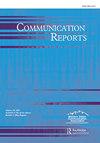我们该如何处理事后叙述?回顾想象涉入的维度探索
IF 1.6
Q3 COMMUNICATION
引用次数: 3
摘要
回顾性想象参与(RII)通过叙事来描述人们异步的认知参与。因此,RII关注的是人们在原始故事结束后如何处理叙事(以及他们如何看待叙事)。RII的概念化符合叙事理解和参与的模式以及扩展自我边界的理论。目前的论文通过观察RII与人物、事件、宇宙和背景故事的关系,探讨了这些理论对RII的影响。研究结果表明,RII是一个多方面的结构,可以应用于许多叙事元素。本文章由计算机程序翻译,如有差异,请以英文原文为准。
What Do We Do with Narratives after the Fact? Exploring Dimensions of Retrospective Imaginative Involvement
Retrospective imaginative involvement (RII) describes people’s asynchronous cognitive involvement with a narrative. Accordingly, RII focuses on what people do with narratives (and how they think about them) after the original story has ended. RII is conceptualized in keeping with the model of narrative comprehension and engagement and the theory of expanding boundaries of the self. The current paper explores the implications of these theories for RII by looking at RII in relation to characters, events, universe, and backstory. The results demonstrate that RII is a multifaceted construct that can be applied to numerous narrative elements.
求助全文
通过发布文献求助,成功后即可免费获取论文全文。
去求助
来源期刊

Communication Reports
COMMUNICATION-
CiteScore
3.70
自引率
0.00%
发文量
18
期刊介绍:
Communication Reports (CR), published biannually since 1988, is one of two scholarly journals of the Western States Communication Association (WSCA). The journal publishes original manuscripts that are short, data/text-based, and related to the broadly defined field of human communication. The mission of the journal is to showcase exemplary scholarship without censorship based on topics, methods, or analytical tools. Articles that are purely speculative or theoretical, and not data analytic, are not appropriate for this journal. Authors are expected to devote a substantial portion of the manuscript to analyzing and reporting research data.
 求助内容:
求助内容: 应助结果提醒方式:
应助结果提醒方式:


